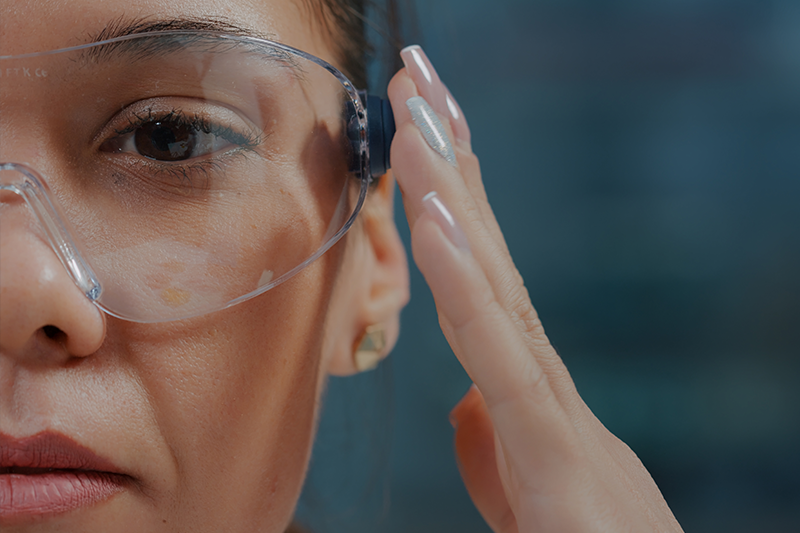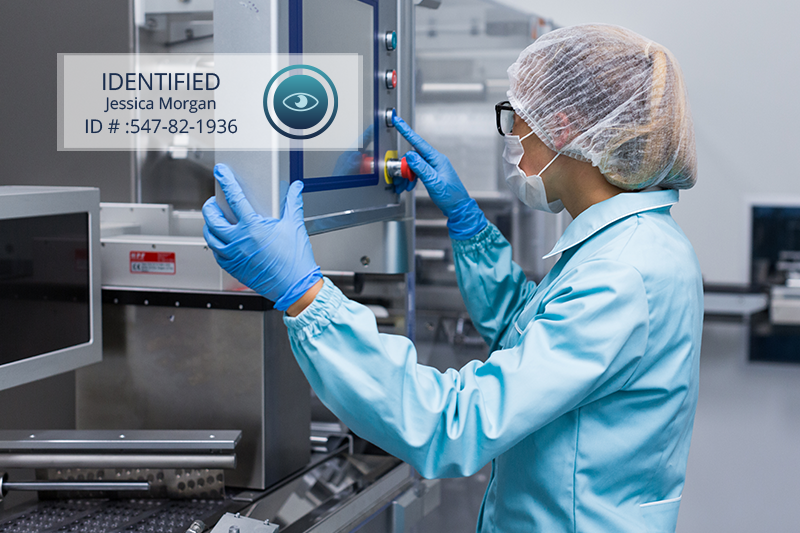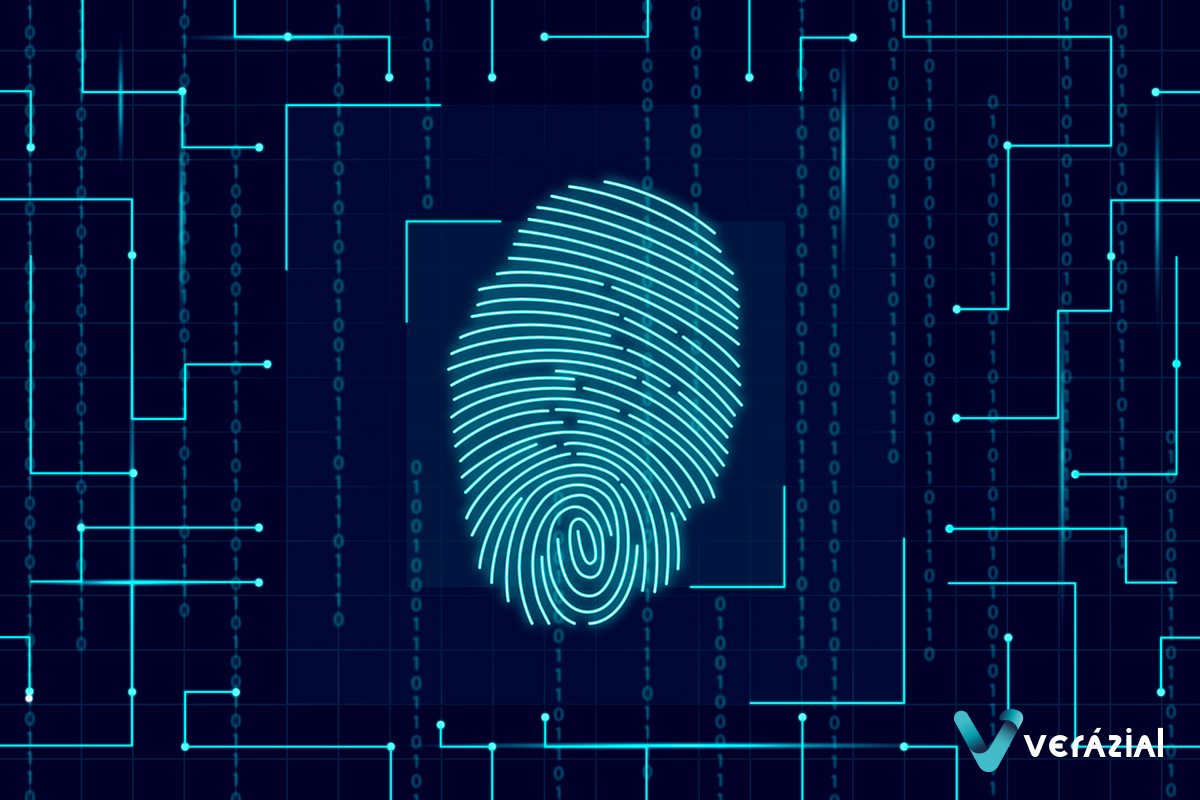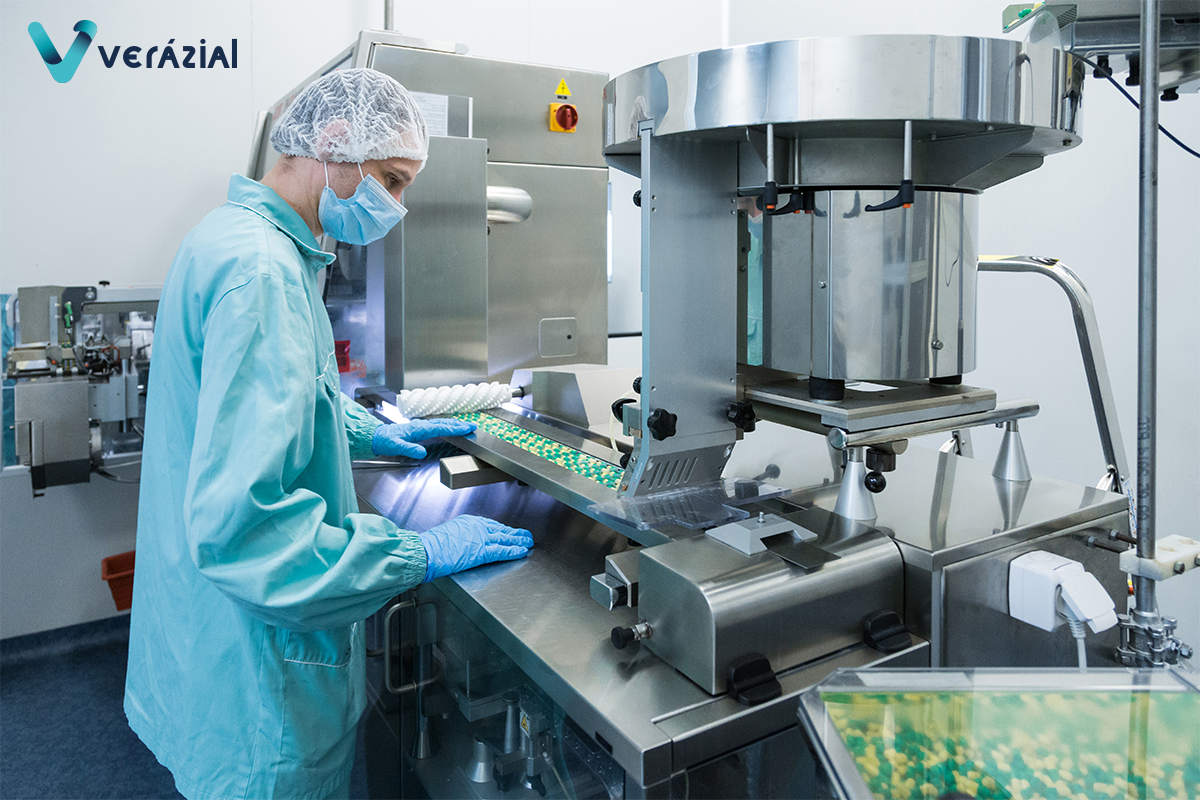Electronic signature with iris biometrics: Guaranteed security and regulatory compliance in pharmaceutical manufacturing
In the pharmaceutical industry, the signature of the responsible person is crucial for complying with GMP regulations. However, traditional methods have security and traceability vulnerabilities. Biometrics provides an advanced solution that enhances information integrity and ensures regulatory compliance.
In the pharmaceutical industry, regulatory compliance is more than just a requirement—it is a fundamental pillar for ensuring the safety, quality, and reliability of medicine production. Regulations like GMP (Good Manufacturing Practices) mandate rigorous auditing of every process, guaranteeing data integrity and full traceability throughout the production chain.
A critical aspect of data management in regulated environments is adherence to ALCOA+ principles, which require information to be attributable, legible, contemporaneous, original, accurate, complete, consistent, accessible, and durable. These standards ensure that records remain reliable, verifiable, and safeguarded against unauthorized modifications or access.
Regulatory agencies such as the EMA (European Medicines Agency) and the FDA (Food and Drug Administration) mandate that records and signatures be unique and unequivocally linked to each user, ensuring compliance with the highest standards of security and reliability. For more insights, we invite you to read our article Employees’ identification in the pharmaceutical industry according ALCOA+.
Pharmaceutical companies that have digitized their production processes rely on systems such as ERP (Enterprise Resource Planning), MES (Manufacturing Execution System), and LIMS (Laboratory Information Management System) to enhance manufacturing management, quality control, and data traceability. However, authentication in these systems often relies on credentials like usernames and passwords, a method that presents significant limitations in terms of security and operational efficiency.
- Risk of Unauthorized Access: Credentials can be compromised or shared, jeopardizing data integrity.
- Inefficiency and Delays: Remembering and managing multiple passwords slows down processes and reduces productivity.
Increased Costs: Password management and reliance on paper-based signatures lead to higher expenses for technical support and system maintenance.
The solution: Electronic Signature with Iris Biometrics
Implementing a biometric electronic signature addresses these challenges effectively while ensuring compliance with regulatory standards. This technology offers high security, rapid, accurate and contactless identification, and enhanced operational efficiency.
Notably, EMA Annex 11 recognizes biometrics as a sufficiently secure authentication method, eliminating the need for additional identifiers. Unlike traditional credentials, which can be shared or compromised, biometric authentication ensures unambiguous user identification, guaranteeing that each signature is unique and directly attributable to the authorized individual.
Among the various biometric technologies, iris recognition is the most suitable for the pharmaceutical industry, particularly in environments like clean rooms where gloves and masks are required. Unlike fingerprints or facial recognition, iris biometrics functions seamlessly even when users wear protective goggles, ensuring both high security and fast authentication without disrupting workflows.

Iris biometric electronic signature process
An efficient biometric system for electronic signature must have:
- A centralized server that stores the biometric database with employee records.
- Client software for the registering and storing of biometric samples of each user.
- Client authentication software, to identify employees when signing tasks.
- Integration with production software (MES,ERP, EBR, etc.) for seamless workflow management.
Using iris biometrics as an example, the process unfolds as follows:
- Iris enrollment: Each employee registers once, usually in the administration or HR area. Both irises are captured using a USB sensor connected to a PC with the biometric enrollment software.
- Installation in the manufacturing area: USB-connected iris sensors are placed on PCs running production software, enabling quick employee identification at a comfortable distance (30-40 cm).
- Biometric authentication: When the production software requests an electronic signature, the biometric system is activated.
- Instant identification: The employee simply looks at the sensor momentarily for the iris to be captured and accurately recognized.
- Signature and validation: The production software receives the authenticated user data and the operation is done within seconds.
- Audit trail: A double audit trail is generated, with one record in the production software and another in the biometric system, ensuring process integrity and full traceability.
Benefits of Electronic Signature with Biometrics
The implementation of biometric electronic signature brings numerous advantages for pharmaceutical companies:
- 100% guaranteed security and authentication: Iris biometrics ensures that each action is signed by the correct person, eliminating the risk of identity theft.
- Speed and Ease of use: Authentication is performed within seconds, allowing seamless operations and without the need for password management.
- Operational efficiency: The fast identification process reduces the time employees spend on authentication, enhancing overall productivity.
- Cost reduction: Eliminating password management and minimizing system maintenance leads to lower operational and IT expenses.
Beyond manufacturing, biometrics can also be applied in other areas within the pharmaceutical industry, such as document signature in quality departments, internal audits and access control to critical equipment and systems.
In conclusion, in an industry where accuracy and excellence are paramount, adopting biometric technologies helps companies excel in safety, efficiency and compliance, ensuring regulatory compliance without disrupting productivity.
Find out how Verázial ID Pharma solves all employees’ identification needs in pharmaceutical companies.
Contact us for a demo and/or a customized analysis.
Electronic signature with iris biometrics: Guaranteed security and regulatory compliance in pharmaceutical manufacturing
In the pharmaceutical industry, the signature of the responsible person is crucial for complying with GMP regulations. However, traditional methods have security and traceability vulnerabilities. Biometrics provides an advanced solution that enhances information integrity and ensures regulatory compliance.
In the pharmaceutical industry, regulatory compliance is more than just a requirement—it is a fundamental pillar for ensuring the safety, quality, and reliability of medicine production. Regulations like GMP (Good Manufacturing Practices) mandate rigorous auditing of every process, guaranteeing data integrity and full traceability throughout the production chain.
A critical aspect of data management in regulated environments is adherence to ALCOA+ principles, which require information to be attributable, legible, contemporaneous, original, accurate, complete, consistent, accessible, and durable. These standards ensure that records remain reliable, verifiable, and safeguarded against unauthorized modifications or access.
Regulatory agencies such as the EMA (European Medicines Agency) and the FDA (Food and Drug Administration) mandate that records and signatures be unique and unequivocally linked to each user, ensuring compliance with the highest standards of security and reliability. For more insights, we invite you to read our article Employees’ identification in the pharmaceutical industry according ALCOA+.
Pharmaceutical companies that have digitized their production processes rely on systems such as ERP (Enterprise Resource Planning), MES (Manufacturing Execution System), and LIMS (Laboratory Information Management System) to enhance manufacturing management, quality control, and data traceability. However, authentication in these systems often relies on credentials like usernames and passwords, a method that presents significant limitations in terms of security and operational efficiency.
- Risk of Unauthorized Access: Credentials can be compromised or shared, jeopardizing data integrity.
- Inefficiency and Delays: Remembering and managing multiple passwords slows down processes and reduces productivity.
Increased Costs: Password management and reliance on paper-based signatures lead to higher expenses for technical support and system maintenance.
The solution: Electronic Signature with Iris Biometrics
Implementing a biometric electronic signature addresses these challenges effectively while ensuring compliance with regulatory standards. This technology offers high security, rapid, accurate and contactless identification, and enhanced operational efficiency.
Notably, EMA Annex 11 recognizes biometrics as a sufficiently secure authentication method, eliminating the need for additional identifiers. Unlike traditional credentials, which can be shared or compromised, biometric authentication ensures unambiguous user identification, guaranteeing that each signature is unique and directly attributable to the authorized individual.
Among the various biometric technologies, iris recognition is the most suitable for the pharmaceutical industry, particularly in environments like clean rooms where gloves and masks are required. Unlike fingerprints or facial recognition, iris biometrics functions seamlessly even when users wear protective goggles, ensuring both high security and fast authentication without disrupting workflows.

Iris biometric electronic signature process
An efficient biometric system for electronic signature must have:
- A centralized server that stores the biometric database with employee records.
- Client software for the registering and storing of biometric samples of each user.
- Client authentication software, to identify employees when signing tasks.
- Integration with production software (MES,ERP, EBR, etc.) for seamless workflow management.
Using iris biometrics as an example, the process unfolds as follows:
- Iris enrollment: Each employee registers once, usually in the administration or HR area. Both irises are captured using a USB sensor connected to a PC with the biometric enrollment software.
- Installation in the manufacturing area: USB-connected iris sensors are placed on PCs running production software, enabling quick employee identification at a comfortable distance (30-40 cm).
- Biometric authentication: When the production software requests an electronic signature, the biometric system is activated.
- Instant identification: The employee simply looks at the sensor momentarily for the iris to be captured and accurately recognized.
- Signature and validation: The production software receives the authenticated user data and the operation is done within seconds.
- Audit trail: A double audit trail is generated, with one record in the production software and another in the biometric system, ensuring process integrity and full traceability.
Benefits of Electronic Signature with Biometrics
The implementation of biometric electronic signature brings numerous advantages for pharmaceutical companies:
- 100% guaranteed security and authentication: Iris biometrics ensures that each action is signed by the correct person, eliminating the risk of identity theft.
- Speed and Ease of use: Authentication is performed within seconds, allowing seamless operations and without the need for password management.
- Operational efficiency: The fast identification process reduces the time employees spend on authentication, enhancing overall productivity.
- Cost reduction: Eliminating password management and minimizing system maintenance leads to lower operational and IT expenses.
Beyond manufacturing, biometrics can also be applied in other areas within the pharmaceutical industry, such as document signature in quality departments, internal audits and access control to critical equipment and systems.
In conclusion, in an industry where accuracy and excellence are paramount, adopting biometric technologies helps companies excel in safety, efficiency and compliance, ensuring regulatory compliance without disrupting productivity.
Find out how Verázial ID Pharma solves all employees’ identification needs in pharmaceutical companies.
Contact us for a demo and/or a customized analysis.
Electronic signature with iris biometrics: Guaranteed security and regulatory compliance in pharmaceutical manufacturing
In the pharmaceutical industry, the signature of the responsible person is crucial for complying with GMP regulations. However, traditional methods have security and traceability vulnerabilities. Biometrics provides an advanced solution that enhances information integrity and ensures regulatory compliance.
In the pharmaceutical industry, regulatory compliance is more than just a requirement—it is a fundamental pillar for ensuring the safety, quality, and reliability of medicine production. Regulations like GMP (Good Manufacturing Practices) mandate rigorous auditing of every process, guaranteeing data integrity and full traceability throughout the production chain.
A critical aspect of data management in regulated environments is adherence to ALCOA+ principles, which require information to be attributable, legible, contemporaneous, original, accurate, complete, consistent, accessible, and durable. These standards ensure that records remain reliable, verifiable, and safeguarded against unauthorized modifications or access.
Regulatory agencies such as the EMA (European Medicines Agency) and the FDA (Food and Drug Administration) mandate that records and signatures be unique and unequivocally linked to each user, ensuring compliance with the highest standards of security and reliability. For more insights, we invite you to read our article Employees’ identification in the pharmaceutical industry according ALCOA+.
Pharmaceutical companies that have digitized their production processes rely on systems such as ERP (Enterprise Resource Planning), MES (Manufacturing Execution System), and LIMS (Laboratory Information Management System) to enhance manufacturing management, quality control, and data traceability. However, authentication in these systems often relies on credentials like usernames and passwords, a method that presents significant limitations in terms of security and operational efficiency.
- Risk of Unauthorized Access: Credentials can be compromised or shared, jeopardizing data integrity.
- Inefficiency and Delays: Remembering and managing multiple passwords slows down processes and reduces productivity.
Increased Costs: Password management and reliance on paper-based signatures lead to higher expenses for technical support and system maintenance.
The solution: Electronic Signature with Iris Biometrics
Implementing a biometric electronic signature addresses these challenges effectively while ensuring compliance with regulatory standards. This technology offers high security, rapid, accurate and contactless identification, and enhanced operational efficiency.
Notably, EMA Annex 11 recognizes biometrics as a sufficiently secure authentication method, eliminating the need for additional identifiers. Unlike traditional credentials, which can be shared or compromised, biometric authentication ensures unambiguous user identification, guaranteeing that each signature is unique and directly attributable to the authorized individual.
Among the various biometric technologies, iris recognition is the most suitable for the pharmaceutical industry, particularly in environments like clean rooms where gloves and masks are required. Unlike fingerprints or facial recognition, iris biometrics functions seamlessly even when users wear protective goggles, ensuring both high security and fast authentication without disrupting workflows.

Iris biometric electronic signature process
An efficient biometric system for electronic signature must have:
- A centralized server that stores the biometric database with employee records.
- Client software for the registering and storing of biometric samples of each user.
- Client authentication software, to identify employees when signing tasks.
- Integration with production software (MES,ERP, EBR, etc.) for seamless workflow management.
Using iris biometrics as an example, the process unfolds as follows:
- Iris enrollment: Each employee registers once, usually in the administration or HR area. Both irises are captured using a USB sensor connected to a PC with the biometric enrollment software.
- Installation in the manufacturing area: USB-connected iris sensors are placed on PCs running production software, enabling quick employee identification at a comfortable distance (30-40 cm).
- Biometric authentication: When the production software requests an electronic signature, the biometric system is activated.
- Instant identification: The employee simply looks at the sensor momentarily for the iris to be captured and accurately recognized.
- Signature and validation: The production software receives the authenticated user data and the operation is done within seconds.
- Audit trail: A double audit trail is generated, with one record in the production software and another in the biometric system, ensuring process integrity and full traceability.
Benefits of Electronic Signature with Biometrics
The implementation of biometric electronic signature brings numerous advantages for pharmaceutical companies:
- 100% guaranteed security and authentication: Iris biometrics ensures that each action is signed by the correct person, eliminating the risk of identity theft.
- Speed and Ease of use: Authentication is performed within seconds, allowing seamless operations and without the need for password management.
- Operational efficiency: The fast identification process reduces the time employees spend on authentication, enhancing overall productivity.
- Cost reduction: Eliminating password management and minimizing system maintenance leads to lower operational and IT expenses.
Beyond manufacturing, biometrics can also be applied in other areas within the pharmaceutical industry, such as document signature in quality departments, internal audits and access control to critical equipment and systems.
In conclusion, in an industry where accuracy and excellence are paramount, adopting biometric technologies helps companies excel in safety, efficiency and compliance, ensuring regulatory compliance without disrupting productivity.
Find out how Verázial ID Pharma solves all employees’ identification needs in pharmaceutical companies.
Contact us for a demo and/or a customized analysis.
You May Also Like
You May Also Like





